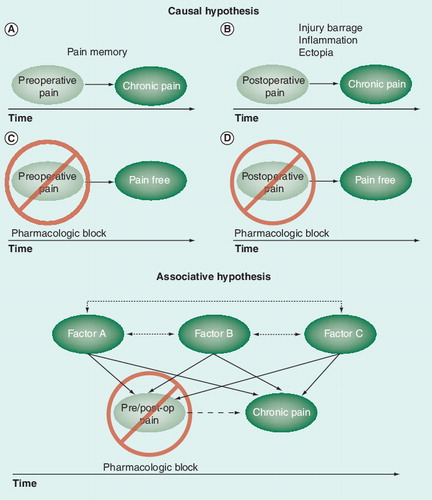Figures & data
Table 1. Incidence of chronic postsurgical pain following various surgical procedures.

![Figure 2. Illustration of the study by Fassoulaki et al.Citation[181] examining the preventive effect of gabapentin (a Cavα2-δ ligand) in women undergoing breast cancer surgery.EMLA: Eutectic mixture of local anesthetics; G: Group; PACU: Post-anesthetic care unit; PO: per os; post-op: Postoperation.](/cms/asset/0cd4622a-3443-4ab1-b8e5-6369eb859225/iern_a_11214171_f0002_b.jpg)
